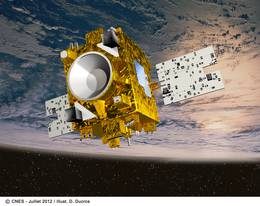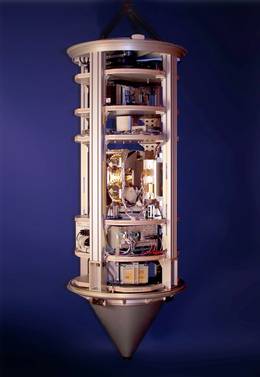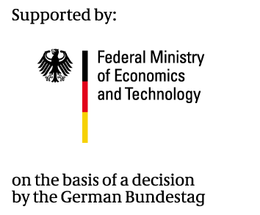


MICROSCOPE
Microscope (MICRO Satellite à traînée Compensée pour l'Observation du Principe d'Equivalence) is a part of the micro-satellite line of CNES (Centre National d'Études Spatiales, France). The objective of the mission is to test the Principle of Equivalence with an accuracy of 10-15, or two orders of magnitude better than the accuracy that can be achieved with ground-based experiments like pendulum or torsion-balance experiments. This accuracy will be achieved by means of long integration time with extremely sensitive capacitive acceleration sensors developed by ONERA (Office National d'Etudes et de Recherches Aérospatiales, Châtillon, France). MICROSCOPE is scheduled for launch in 2016 (22nd of April). The planned mission duration is 18-24 months. This mission will be the first opportunity which Europe has had to qualify the technologies for drag-free satellites. Testing such a satellite is essential for future missions related to fundamental physics (Detection of gravitational waves, LISA and OMEGA), astrophysical interferometry (GAIA, DARWIN), and precise gravitational field determination.
Payload qualification
ZARM is responsible for the test and verification of the accelerometers developed at ONERA (Chatillon, France) under "zero-g conditions". In particular, numerous experiments on the drop tower are performed to demonstrate sensor performance and structure characteristics. For this purpose a freeflyer capsule and a catapult capsule is used. The free fall tests of the MICROSCOPE hardware at the drop tower are essential for the success of the whole mission.
Mission modelling
The ZARM MICROSCOPE group, which is a member of the science team, currently prepares the data evaluation process. Therefore, a comprehensive simulation of the real system including the science signal and all error sources is built for the development and testing of data reduction and data analysis algorithms to extract the EP violation signal. For this purpose, the HPS is used. The result of this work is the base for the mission and post-mission data analysis that will be performed at ZARM in close cooperation to the french partner institutes.
Acknowledgements
The contribution of ZARM is supported and funded by the German Space Agency DLR under grant number 50 OY 1305 and the German Research Society DFG under grant number LA 905/12-1.
Further information
www.arianespace.com/mission/ariane-flight-vs14/
Press / Media
www.pro-physik.de/details/physiknews/9250341/Im_Prinzip_aequivalent.html
www.dlr.de/dlr/presse/desktopdefault.aspx/tabid-10172/213_read-17549/year-all/
www.stern.de/panorama/wissen/kosmos/satellit--microscope---einstein-auf-dem-pruefstand-6815488.html
phys.org/news/2016-04-europe-satellites-earth-einstein.html
www.theguardian.com/science/2016/apr/21/french-satellite-einstein-test
www.astronews.com/news/artikel/2016/04/1604-021.shtml
Watch the liftoff of Soyuz VS14


 "
"